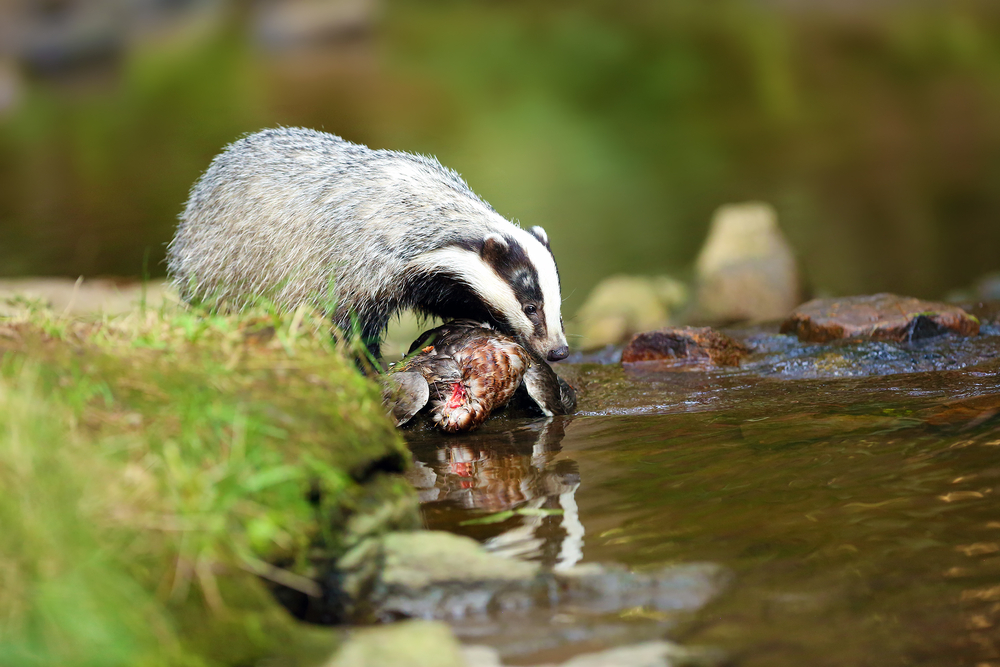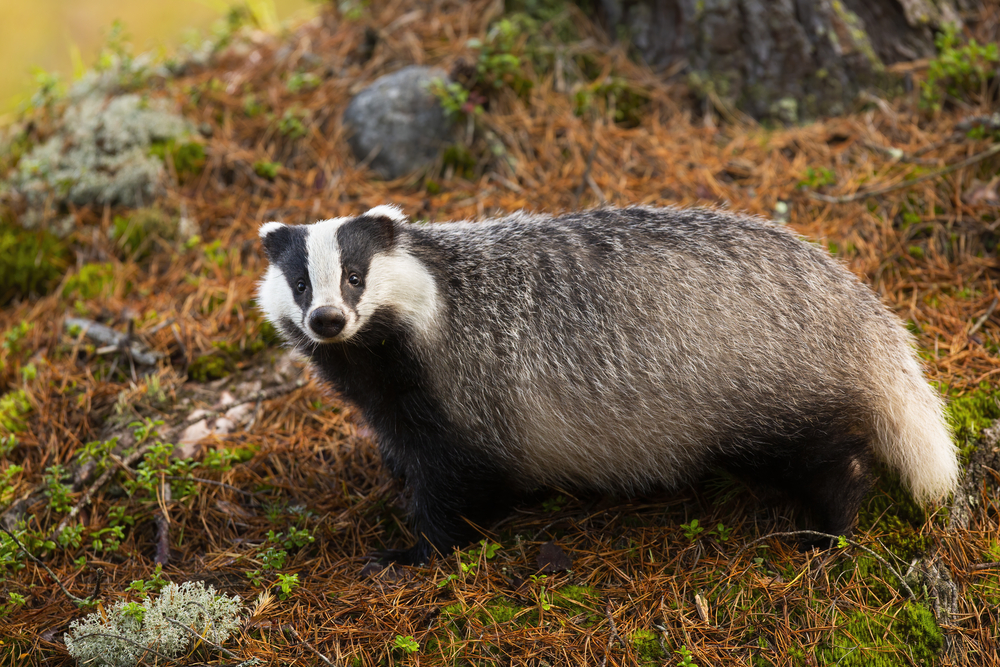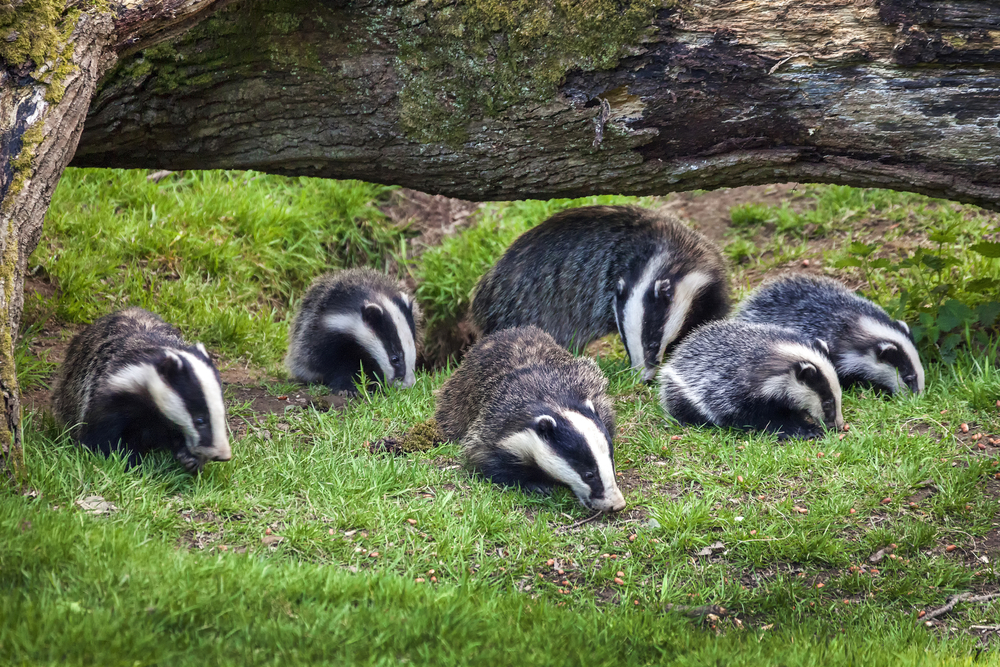Badgers (Meles meles) are a fascinating species of wildlife, with their wide variety of habitats and diets across the UK. It’s important to understand more about badger behaviour so that we can help protect them from human-caused threats like habitat destruction. In this article, you’ll learn all about badgers: where they live, what they eat, how they behave in the wild and how their conservation status is currently faring. We’ll also discuss ways to observe these animals safely without disturbing them in their natural environment.
Overview
The European badger, also known as the Eurasian badger, is a species of mustelid, or weasel family, native to Europe and parts of Asia. It is a medium-sized mammal with short legs and long claws for digging. Badgers are omnivorous animals that feed on small mammals, birds, insects, fruits and vegetables. They live in underground burrows called setts which can be found in woodlands, meadows and hedgerows across the UK.
Badger Habitat

The European badger (Meles meles) is the only species of badger native to Britain. It has adapted well over time and can now be found living almost anywhere from sea level up into mountain regions, provided there is sufficient shelter available for it.
Badgers are found in a variety of habitats across the UK, from woodlands and hedgerows to grassland and heath. They prefer areas with plenty of cover such as long grass or dense shrubs, where they can hide away during the day. Badgers also need access to food sources like earthworms, beetles and fruit, so they tend to live near farmland or other open areas that provide these resources.
European badgers have a wide geographical range throughout Britain but are most common in England and Wales. In Scotland, their numbers have been declining due to persecution by gamekeepers who see them as pests; however, badger populations remain healthy in some parts of Scotland’s uplands.
In urban environments, badgers may be seen foraging around parks and gardens at night, although this is becoming increasingly rare due to development encroaching on their natural habitat. Badgers will also sometimes use disused buildings or tunnels as dens if there is enough space for them to do so safely without being disturbed by humans or predators.
Badger Diet

Badgers are omnivorous animals, meaning they eat both plants and animals. They have a varied diet that includes fruits, vegetables, insects and small animals, but mainly feed on small mammals such as mice, voles, rabbits and hares. They are opportunistic feeders who will take advantage of whatever food is available to them.
Badgers also consume insects like earthworms, beetles and caterpillars. In addition to these sources of food, badgers will also scavenge for carrion or other dead animals that may be found in their habitat.
Foraging Habits
Badgers are nocturnal creatures, so they typically hunt at night when it is dark outside. They use their keen sense of smell to locate prey and then dig them out with their powerful claws from underground burrows or under logs or rocks where the prey may be hiding. Badgers have been known to travel up to 10 miles a night while searching for food.
Fruit & Vegetables
In addition to hunting small mammals and insects, badgers will also eat fruit such as apples, pears and berries when available in the wild during certain times of year. They can also consume vegetables such as potatoes if given access by humans living nearby farms or gardens where these foods are grown.
Badger Behaviour

Badgers are highly social animals that live in family groups, or clans. The average clan consists of an adult male and female, their offspring from the previous year, and any young born during the current season. Badger clans will also sometimes include other related adults who may have been evicted from another group or who have lost their own mate.
Social Structure
Badgers typically form monogamous pairs within a clan; however, some males may take multiple mates if they can defend them against rival males. These monogamous pairs often remain together for life but will occasionally separate due to death or dispersal of one partner. Clans are territorial and mark their boundaries with scent markings made by anal glands located on either side of the anus.
Interactions With Other Animals
Badgers are known to be quite aggressive when defending their territory against intruders such as foxes, coyotes, dogs, cats and even humans. They will use both vocalisations (such as growling) and physical aggression (such as biting) to ward off potential threats. In addition to this defensive behaviour, badgers also interact with other species through scavenging for food sources like insects or carrion left behind by larger predators like wolves or bears.
Finding Food
When it comes to finding food, badgers employ a variety of techniques, including digging up roots and bulbs using their powerful claws, hunting small mammals such as mice, eating fruits and berries, scavenging for carrion, raiding bird nests for eggs, consuming earthworms found underground, catching fish in shallow water bodies near rivers/streams etc., preying upon amphibians like frogs and salamanders etc., and even occasionally eating human garbage.
Mating
Mating usually takes place between late winter and early spring, depending on location and climate conditions. After a gestation period of around two months, females give birth in May or June. Litters typically consist of 1-7 cubs which stay with the mother until fall before dispersing into new territories to establish themselves independently and eventually form new clans over time.
Threats To Badgers
One of the biggest threats to badgers is habitat loss caused by urbanization or agricultural development. This can lead to fragmented populations that have difficulty finding food or mates, leading to lower survival rates for young animals. In addition, some farmers may target badgers because they see them as pests that damage crops or spread disease among livestock; this can result in direct killing or trapping of these animals. Finally, roadkill has become increasingly common due to increased traffic on roads near habitats where badgers live; this has led to significant mortality rates for many populations around the world.
Protection Of Badgers
The badger is protected under the Wildlife and Countryside Act 1981 in England, Scotland and Wales. In addition, it is listed as a species of European Protected Species (EPS) which means that it has special protection from certain activities such as disturbance or destruction of its habitat. It is also listed on Annex IV of the Habitats Directive which requires member states to take measures for its conservation. As a result, many areas have been designated as Sites of Special Scientific Interest (SSSI) to protect badgers and their habitats.
Despite these efforts the International Union for Conservation of Nature (IUCN) has classified the Eurasian badger population as being ‘Least Concern’ due to its wide distribution range throughout Europe, but this does not mean that their future is secure – continued protection measures will be needed if we are going to ensure their survival for generations to come.
Observing Badgers In The Wild

Badgers are fascinating creatures to observe in the wild, and with a little patience and knowledge of their habits, you can have an amazing wildlife-watching experience. Here are some tips on how to spot badgers in their natural habitat.
Location
Badgers live in a variety of habitats, including grasslands, woodlands, hedgerows and even gardens. They prefer areas that provide shelter such as hollow trees or burrows dug into the ground. Look for signs of activity, like fresh earth mounds near these locations, which indicate recent digging activities by badgers.
Time
Badgers tend to be most active at night, so it’s best to look for them during twilight hours when they come out from their dens looking for food. If you want to see them during daylight hours, then early morning is usually your best bet, as this is when they will emerge from their dens after sleeping through the night.
Equipment
Binoculars or a spotting scope can help you get a better view of badgers if they are too far away for your naked eye alone. A wildlife photography camera with good zoom capabilities will also help capture any interesting behaviour that you may witness while observing badgers in the wild.
Noise
When trying to spot badgers, it’s important not to make too much noise, as this could scare them off before you get a chance to see them properly. Make sure all electronic devices (including phones) are switched off and keep conversation levels low while searching for badger activity around potential den sites or feeding grounds – remember that sound travels further than we think.

Ash is a contributing author who has been writing about wildlife for as long as he can remember. He has a vast knowledge of many different types of animals, from the tiniest shrews to the great whales that live in the deepest oceans.
